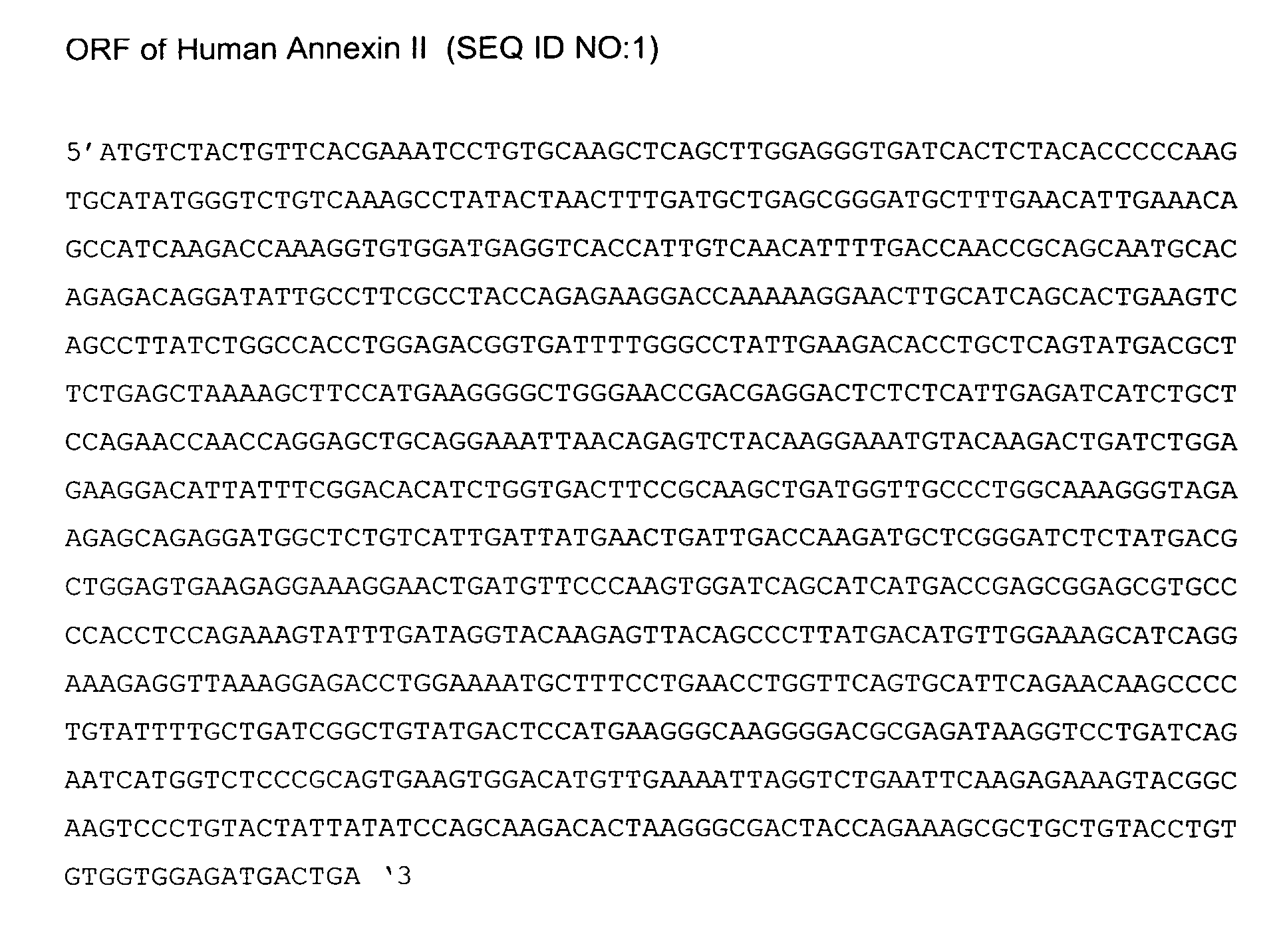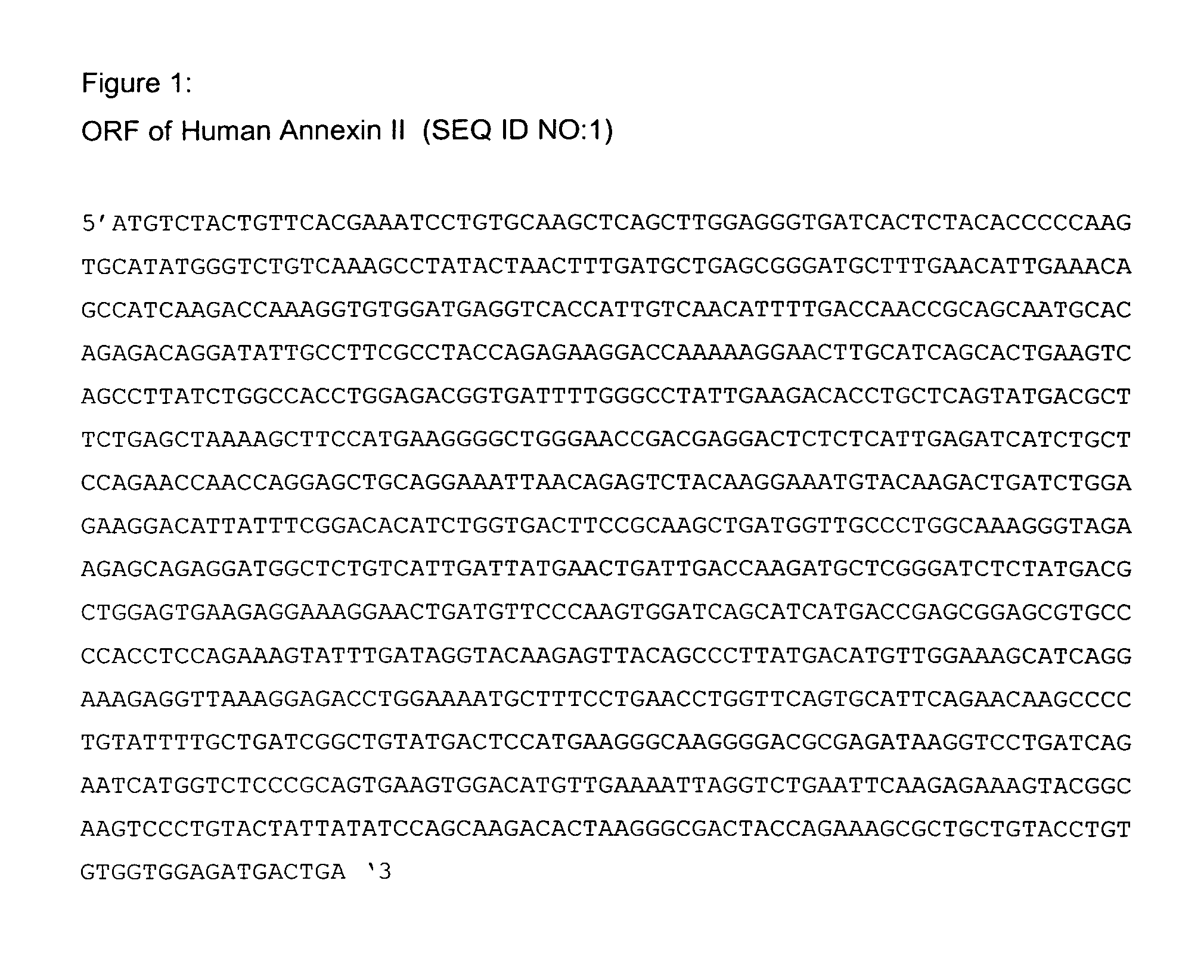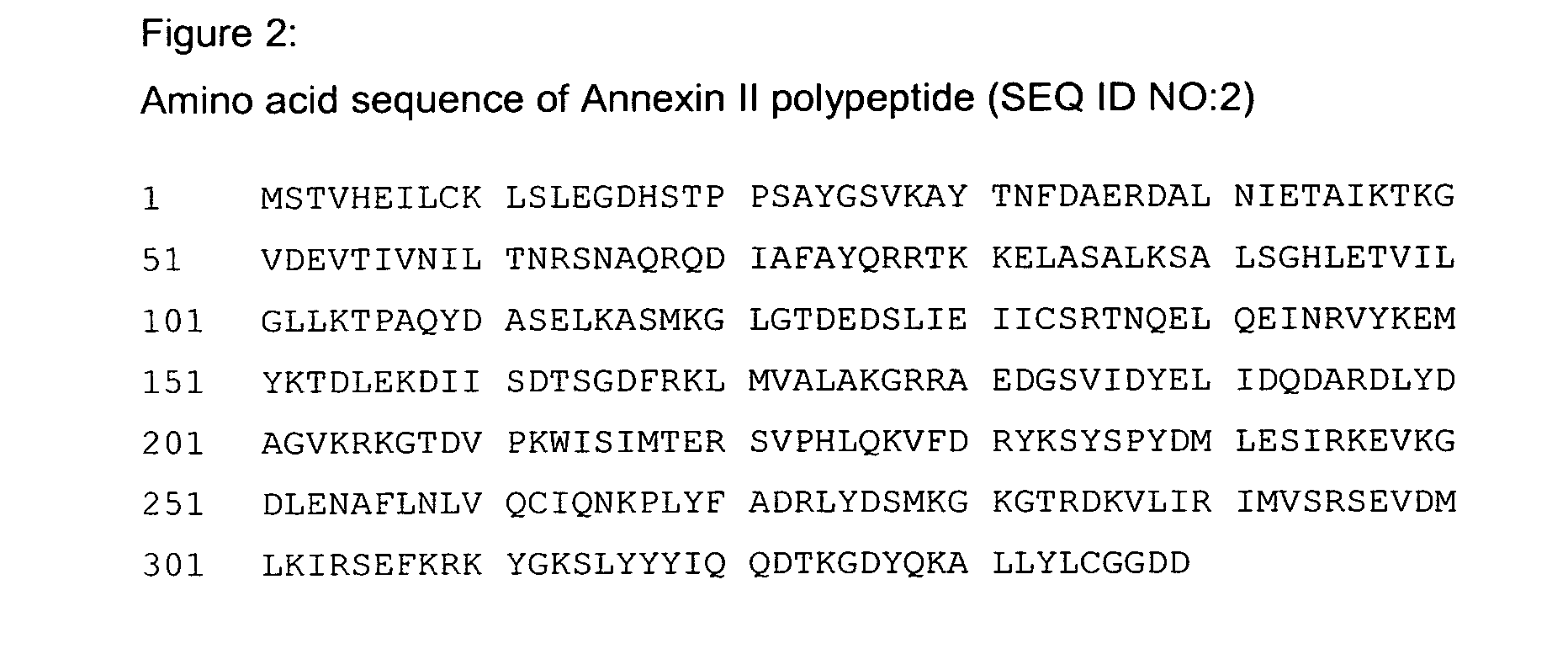Annexin II and uses thereof
- Summary
- Abstract
- Description
- Claims
- Application Information
AI Technical Summary
Benefits of technology
Problems solved by technology
Method used
Image
Examples
example 1
Identification of Genes Involved in the Stroke Event—Annexin II
[0205] As a first step to the novel drug discovery, key genes involved in the stroke event were identified, as provided by the following methods:
Summary of cDNA Micro-Array Construction
[0206] The polynucleotide encoding Annexin II was found by microarray-based differential gene expression, evaluated by both in vivo and in vitro models.
[0207] The cDNA microarray was constructed by combining cDNA libraries (Table A), including a subtraction library, enriched for stroke specific genes. As a result, the “Stroke Chip” consists of a microarray imprinted with about 10,000 low-redundant stroke-specific cDNA clones. The libraries printed on the chip were as described in Table A.
TABLE ADesign of the Stroke Chip: Library types and cDNA sources.MaterialTime pointsType of LibraryIn vivoIn vitro3 h6 h16 h24 hSubtraction library[MCAO]− [Sham]+L3+L4(five independent[MCAO + FK506]− [MCAO]+L5+L6libraries)Primary neurons:+L1+L1+L1+L...
example 2
General Methods
General Methods in Molecular Biology
[0229] Standard molecular biology techniques known in the art and not specifically described were generally followed as in Sambrook et al., Molecular Cloning: A Laboratory Manual, Cold Springs Harbor Laboratory, New York (1989, 1992), and in Ausubel et al., Current Protocols in Molecular Biology, John Wiley and Sons, Baltimore, Md. (1989).
[0230] Polymerase chain reaction (PCR) was carried out generally as in PCR Protocols: A Guide To Methods And Applications, Academic Press, San Diego, Calif. (1990). Reactions and manipulations involving other nucleic acid techniques, unless stated otherwise, were performed as generally described in Sambrook et al., 1989, Molecular Cloning: A Laboratory Manual, Cold Spring Harbor Laboratory Press, and methodology as set forth in U.S. Pat. Nos. 4,666,828; 4,683,202; 4,801,531; 5,192,659 and 5,272,057 and incorporated herein by reference.
[0231] Protein Purification is performed as described below...
example 3
Experimental Validation Results
[0236] siRNA was used for the validation; utilizing siRNA, one can inhibit or reduce the level of a specific desired mRNA. The siRNA denoted as No. 5 in Table 1 was used to reduce the endogenous mRNA level of Annexin II.
Effect of siRNA on Annexin II Gene Expression
[0237] The effect of the siRNA on rat Annexin-II gene expression in REF-52 transfected cells was measured by Real-Time-PCR. The expression of GAPDH serves as a reference (control) gene.
TABLE BsiRNA vectorrAnn-II / GAPDHsiLUC100siAnn-II-rB17.2
[0238] As can be seen, siAnn-II-rB (a vector comprising the Rat Annexin II siRNA depicted in FIG. 5) reduces the expression of rat Annexin II by 82.8%.
[0239] This effect was also validated by Western blot analysis: following transfection with the siRNA vactor, the expression of the Annexin II protein is greatly reduced (as measured with a commercially available Annexin II antibody, Santa Cruz).
[0240] The effect of the siRNA on Human Annexin-II gene ...
PUM
| Property | Measurement | Unit |
|---|---|---|
| Fraction | aaaaa | aaaaa |
| Time | aaaaa | aaaaa |
| Time | aaaaa | aaaaa |
Abstract
Description
Claims
Application Information
 Login to View More
Login to View More - R&D
- Intellectual Property
- Life Sciences
- Materials
- Tech Scout
- Unparalleled Data Quality
- Higher Quality Content
- 60% Fewer Hallucinations
Browse by: Latest US Patents, China's latest patents, Technical Efficacy Thesaurus, Application Domain, Technology Topic, Popular Technical Reports.
© 2025 PatSnap. All rights reserved.Legal|Privacy policy|Modern Slavery Act Transparency Statement|Sitemap|About US| Contact US: help@patsnap.com



